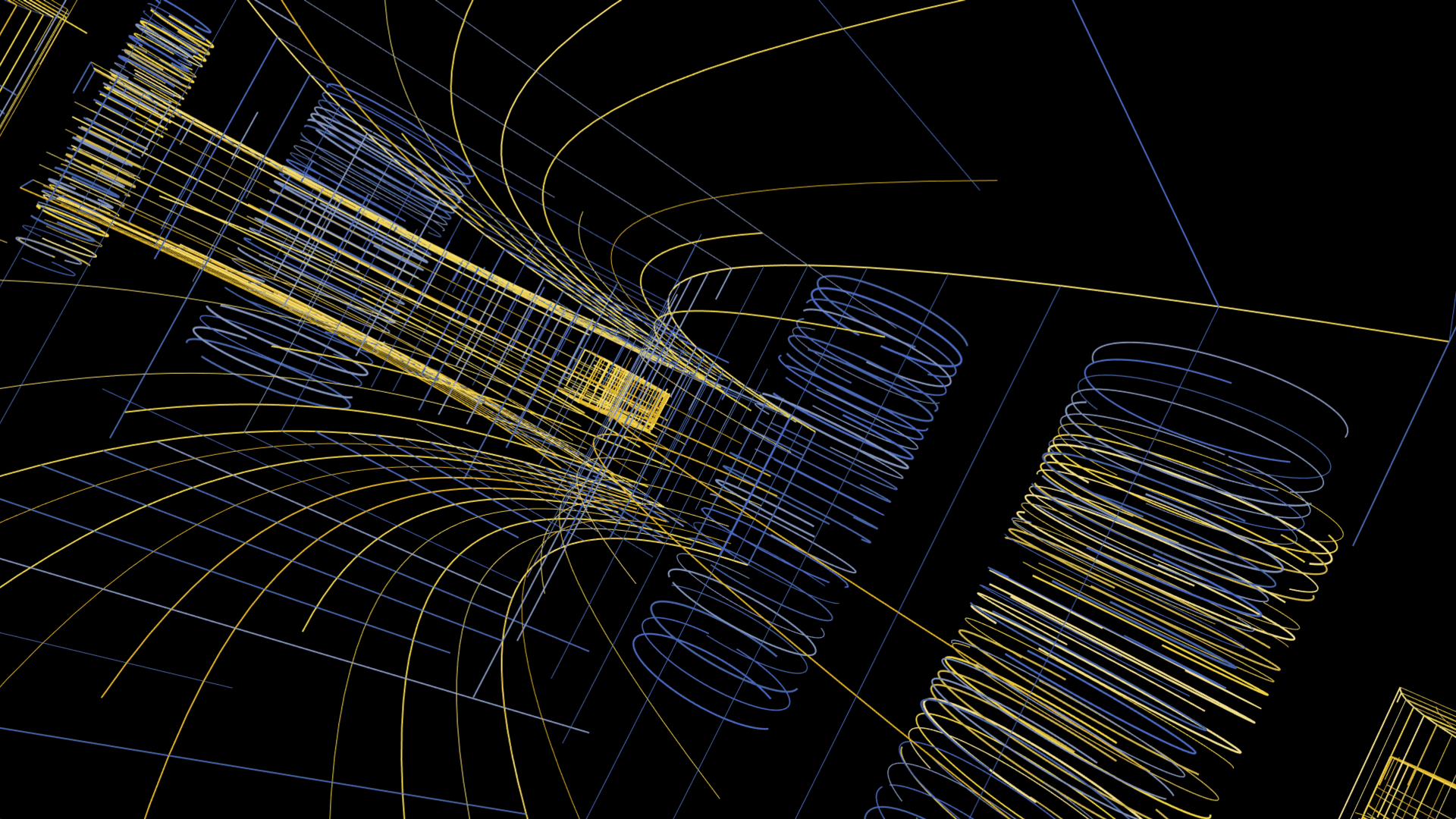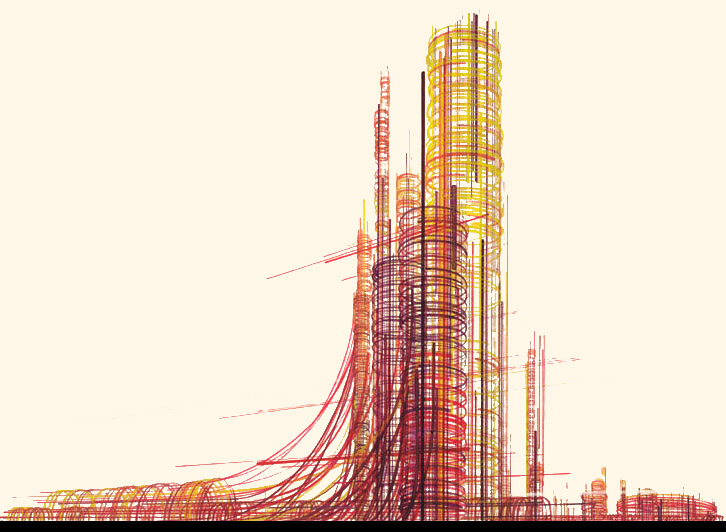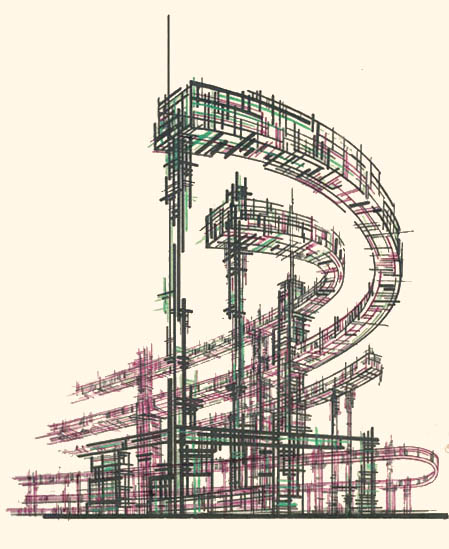Failed Utopias
a generative artwork by Ernie Lafky


Image above by Ernie Lafky
Failed Utopias is inspired by the work of Iakov Chernikhov who was a graphic designer and Constructivist architect. Constructivism was an idealistic art movement that flourished in the early years of the founding of the Soviet Union, roughly from the early 1920s to the late 1930s. Constructivist artists sought to create new art forms that advanced the goals of the Communist Revolution and celebrated the new machine age in all of its dynamic and disorienting splendor. They saw themselves as artist-engineers, and sought truth in the materials of the modern age.
The parallels between now and the time of the Constructivists are striking. Political parties are flirting with both Socialism and Fascism. Once again technology is driving artist-engineers to find new forms with which to express and explore a rapidly changing world and partner with progressive political movements. So it seems timely to consider some works from art history and ponder their lessons.


Image above by Iakov Chernikhov


Image above by Iakov Chernikhov
Chernikhov’s architectural drawings provide the springboard for Failed Utopias. According to Chernikhov, they are architectural fantasies or fairy tales that “produce new directions, new quests, and open new horizons.” To me, they express an abstract beauty and utopian geometric freedom. His idealism is appealing to me. Staring in the face of potentially catastrophic climate change, for example, I feel a need for a new vision for a new society.
And yet one could argue that the utopia imagined by Constructivists, with their embrace of industrial practices and materials, has in part led us to our current precipice. And I think that few would disagree that, despite their initial ideals, the Russian Communist project was largely a disastrous failure. It’s appears to me that Chernikhov’s architectural drawings already contain this contradiction. In addition to fantastical imagination, their sketch-like quality give the buildings a crumbling, abandoned quality, as if they were left partially built or have decayed from disuse. In my piece, I have sought to capture this tension between construction and destruction, utopia and dystopia, fantasy and reality.
The Processing code for Failed Utopias randomly generates a new Chernikhov imaginary each time it’s run. Using a 3D space controlled by PeasyCam, the user can explore the abstract cityscape for as long as the app is run, but then buildings disappear once the program is closed. The emptiness and eerie perfection of 3D graphics seemed like a fitting form for an homage to Chernikhov and the Constructivists. And as a generative art piece, this work extends the mechanization beloved by the Constructivists to include the drawing and the design. The work of the artist-engineer is partially replaced by the code.


Work-in-progress image above by Ernie Lafky
Video
References
Code
The code is based on Joe McAlister's template for 3D projects using PeasyCam.
Also a snippet was taken from the forum.processing.org which allowed me to save multiple images, each with an unique filename.
Research






























































